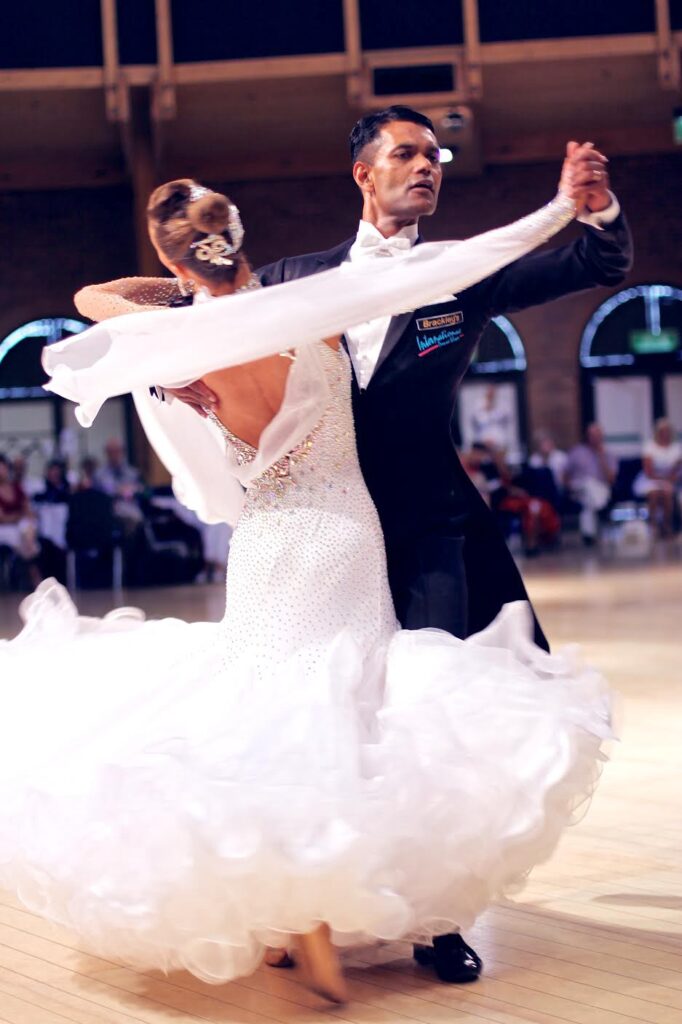One of the burning regrets in my life is that I do not speak fluent Venusian. The language of the fairer sex has eluded me despite my best efforts, and I am beginning to accept I will never fully comprehend it. I have also realised the average Venusian has little knowledge of the language of Mars — which, in dancesport, can be a rich recipe for disaster.
The extreme interdependency dancesport demands of a partnership — after marriage, it is the highest form of contact sport, I dare say — requires an exceptionally sensitive communicative chemistry. Count the number of times you have seen malevolent stares and rolling eyes on the floor this week, and you begin to get the picture.
Counterproductive communication is always limiting. At best it is a frustrating irritant; at worst, a major drag on the performance resources of a partnership. What can competitors do to bridge the communication gap and enhance performance?
The centrality of communication
Communication is the glue that holds together a partnership, yet it is not something we consciously focus on. Most dancers reflect on a training session, but how many analyse his/her communication and think, “Gosh, I shouldn’t have put it that way when I fed back on that running weave. Next time I will phrase it differently!”
A more awakened recognition of the centrality of communication is needed if dancers are to work on improving it. Think of communication the same way you think of maintaining a strong ‘centre’. Imagine letting your core go as you begin your routine. Will you survive? Not. Soon everything suffers — your frame, your posture, your connection. Communication serves the same central purpose in a partnership. It needs to be recognised as such.
Misunderstanding
Osmo Wiio, a Finnish scholar, has an interesting take on communication: if communication can fail, it will. That may be an overtly pessimistic view, but it is telling on the issues we face in our interpersonal interactions.
Communication is never simple. The thought we ‘encode’ (formulate via words into message) and ‘transmit’ (speak, write, telephone or email) to the receiver is rarely received and ‘decoded’ (reconstructed into message) the way we meant it to be. There is too much ‘noise’ (anything that distracts) on as we encode, as we transmit, as we decode (language issues, preconceptions, attention span, etc).
So expect to be misunderstood — and be prepared to remedy that. Equally important, expect to misunderstand. Cultivate the patience to hear your partner out. Take the clarification offered at face value. Then reanalyse, modify your own earlier response. Not much purpose will be served if you stick to your guns and go, “No, that’s not what you just said!”
Supportive climate
The quality of communication depends to a large extent on the communicators — on their clarity of thought, information processing, articulation, listening skills, etc. Whether ‘good’ or ‘bad’ communication takes place depends, thus, on the participants. Productive communication produces a supportive climate where problem-orientated exchanges can take place. And negative communication encourages a defensive climate, leading to more counterproductive communication, to conflict. Tips for dancers? Four points stand out.
One, be aware of your ‘communicative self’. Analyse own weaknesses, strengths. Ask your partner. When does s/he ‘get’ you? When not? A self-awareness of this sort is important in resolving difficult situations.
Two, think before you speak. What you are about to say, is that significant enough to communicate? Is it actionable? Remember, you do not have to voice every thought, every feeling you have on the floor.
Three, think how you will speak. Communication occurs at the ‘content’ (the factual information, the ‘what’ of the message) and ‘relationship’ (the emotional info, the ‘how’ of the message) levels. The latter links to the delivery of the former; it is the dressing, the presentation. It can distract from — and corrupt — the real substance of the message. Yes, that feather step was terrible. But perhaps you can get that point across in a nice way. Rather than assign blame for what went wrong, describe the problem. Say what you felt, what can be done differently.
Four, listen. Honestly listen. To be a good communicator, you need to be a good listener. Scholars recommend active listening, which they differentiate from superficial (where you tune out when you think you have enough information) and arrogant listening (where you listen for pauses so you can say your say). Active listening is about dedicating your attention to the speaker. It goes beyond allowing the speaker to finish. It is about proactively setting up what I would call a listening ground — creating a communicative space for your partner to fill, aiding the transmission of the message, questioning to clarify, and responding in a way the speaker feels listened to.
SOME TIME in the 1960s, an American psychologist named Albert Mehrabian came to an interesting conclusion about human communication: 93 per cent of the attitudinal message — how a message is packaged, as opposed to its actual substance or content — is transmitted by nonverbal channels. Simply put, nonverbal signals determine to a significant extent how the receiver hears your message — as ‘good’ or ‘bad’.

Mehrabian also felt a negative cue will make a disproportionately stronger impact on the receiver than the verbal content. So the dancer who says “Your change of shape is too snatched!” is likely to do more damage if s/he delivers that in the wrong tone of voice.
What if the verbal content is positive, but the nonverbal cues are not? In such cases, the receiver is more likely to derive a negative meaning. Your verbal message could be something as positive as “That was better!” But if delivered with discrepant nonverbal signals (furrowed brow, set lips, that sort of thing), your partner is unlikely to be thrilled. On the other hand, try it with an ‘in sync’ cue (a smile, vocal warmth). It would stress the positivity of the verbal content.
Nonverbal communication, thus, can contextualise the verbal message in many cases. They accentuate, temper, even contradict, the content, allowing the receiver to arrive at a suitable judgement of meaning. Sufficient care hence needs to be taken with nonverbal cues as well for constructive communication.
Integrity of purpose
At times it is a good idea to ask ourselves: why did I just say what I just said?
Psychologist William Schutz saw communication as serving three fundamental human needs: inclusion (to establish a standing with the other involved), affection (to build a relationship), and control (to exercise leadership). Arguably most dancers see their talk as nothing but information exchange, directly aimed at improving their performance.
But it is rarely that. Underlying that is a human need — and it is here that some soul-searching could be useful. Was your message really aimed at educating the partnership (“Shaping away on that step-hop makes it easier for me”)? Was it aimed at gaining control (“Take your head away from my space!”)? Perhaps it is a form of defensive aggression, an attempt to protect from criticism by getting in a word first? Or a stress-relieving tactic?
An understanding of our real communication motives, thus, is important. Reflecting on why we say what we say allows us to strive for what could be called ‘integrity of purpose’, protecting us to some extent from the dishonest motives our very human needs push us into.
The team
It is common in dancesport for couples to have more than one trainer. This poses an interesting question about the constitution of their competitive team. Who does it include?
I am sticking my neck out here, but my hypothesis is that given the situation, most couples ‘close ranks’, containing the team membership to own selves, perhaps with a limited provision for the main trainers. While this is eminently pragmatic, it could also lead to a constrained communication situation.
The feeling a trainer is shared provides for a less-than-wholesome communication from dancers. This is compounded by the trainer’s knowledge the couple concerned also has other trainers, including rival coaches. The multiple personalities involved in the training arguably produce a more complex situation, which requires better communication — but as dancers are likely to see only themselves as the team, there is a good chance they share less with the ‘outsider’ (trainer).
Perhaps a conscious effort need to be made by dancers to involve the trainers — particularly the main trainers — more so they are better positioned to contribute. A plus side of this is that it could spur more interest from the trainers, quite often allowing them to take an active interest in you.
Motivational communication
Compared to other team sports, there are limited avenues of motivation in dancesport. There is no dedicated manager, for instance, and no other team members to step in. This places the onus of keeping each other’s spirit alive squarely on the dancers themselves.
Being conscious your partner is considerably dependent on your feedback — as there are no baskets to sink or goals to score, an important measure of performance is how it ‘felt’ to you — for his/her optimism is a good start. Though you might have the best intention at heart, communication that continually stress what is not working can be demotivating. Your partner could well get locked in the ‘there’s-no-pleasing-this-person-so-why-bother’ zone.
The trick is to ensure there is enough positive feedback as well, so that a balance is achieved. A simple exercise: for every problem you want to bring to your partner’s attention, think of two things that have gone well. And — this is important — deliver the good news in a way that will make your partner believe it, with ‘in sync’ nonverbal cues.
You just could make your day.
This article first appeared in Dance Today.

Previous Next